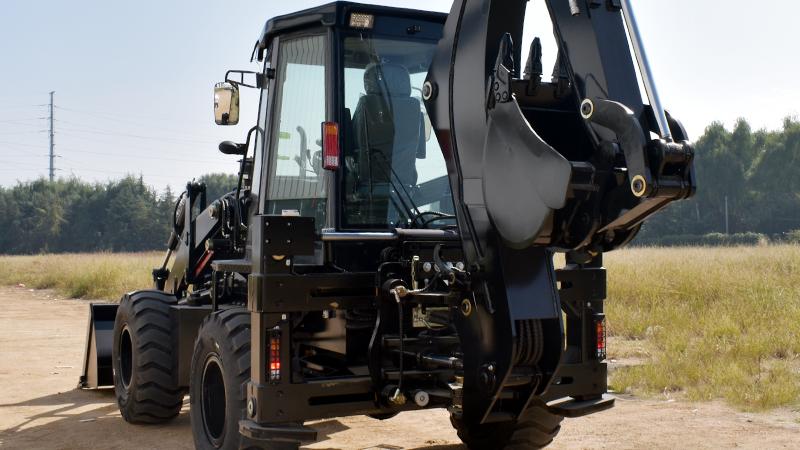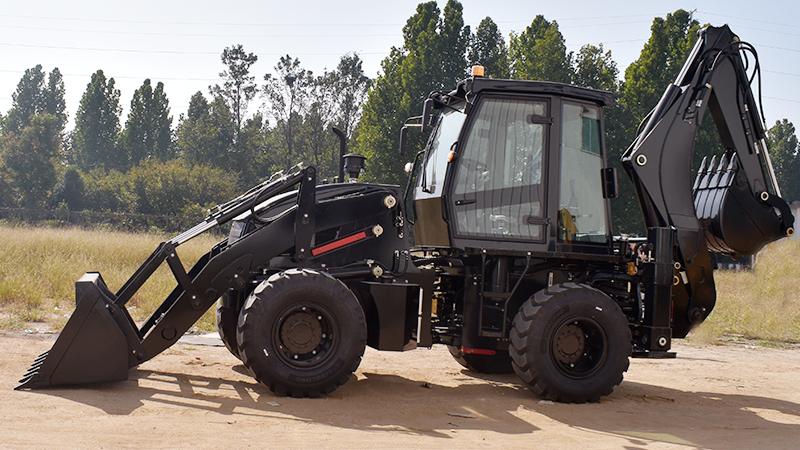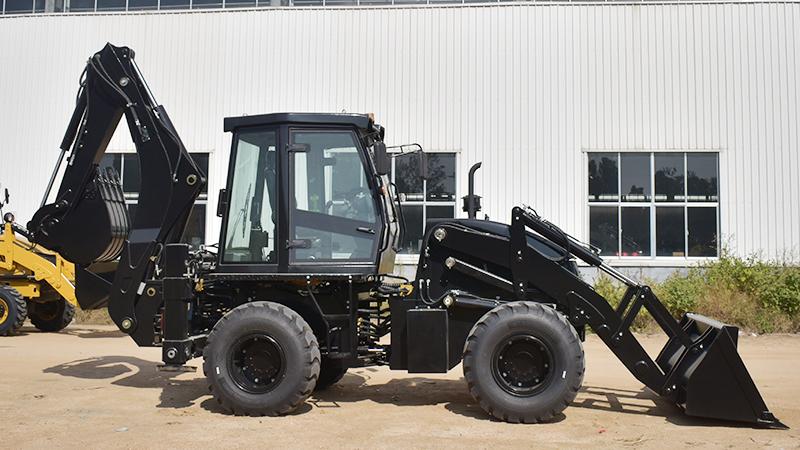The question of the standard digging depth for a typical backhoe loader is fundamental for project planning and equipment selection across the construction, utility, and agricultural sectors. While specific models vary, the industry has coalesced around a common benchmark. For a standard backhoe loader, often defined by a machine with an operating weight in the 7 to 8-ton range and a horsepower rating between 80 and 100, the typical digging depth falls within the range of 14 to 16 feet, or approximately 4.3 to 4.9 meters. This specification, usually measured from the ground level to the tip of the bucket teeth with the machine positioned on a flat, level surface and the boom fully extended, represents a carefully engineered balance between power, stability, and practical application. This depth capability is not an arbitrary figure; it is the result of decades of refinement to meet the demands of the most common tasks these machines perform, such as digging footings, trenching for utility lines, and general site excavation. Manufacturers design the geometry of the backhoe's boom, dipper stick, and hydraulic cylinders to optimize force and reach within this range, ensuring that the machine can generate sufficient breakout force and curling power to handle a variety of soil conditions, from loose topsoil to compacted clay, without compromising the structural integrity of the components or the overall stability of the machine itself. This 14-to-16-foot range has thus become the universally accepted "sweet spot," providing ample capability for a vast majority of applications while maintaining a machine size that is transportable without special permits and maneuverable on confined job sites.
Delving deeper into the engineering and operational context, achieving this standard digging depth is a complex interplay of several core systems within the backhoe loader. The primary determinant is the kinematic design—the specific lengths and pivot points of the boom and dipper stick. Engineers use sophisticated software to model this linkage system, maximizing the depth and reach while ensuring that hydraulic forces are efficiently transferred into digging power. The powerful hydraulic system is the muscle behind this movement. A series of twin hydraulic cylinders actuate the boom and dipper stick, and the machine's hydraulic pump must deliver a consistent flow of high-pressure fluid to provide the necessary digging force, measured as breakout force, at the bucket teeth even at the maximum depth. However, power and reach are meaningless without stability. When the operator extends the backhoe to its maximum digging depth, it creates a significant overturning moment. This is where the fully independent stabilizer legs, or outriggers, become critical. Before deep digging commences, the operator lowers these heavy-duty legs, effectively lifting the rear tires of the tractor unit off the ground and creating a wide, stable platform. This action prevents the machine from rocking or, in a worst-case scenario, tipping forward into the trench. The combination of a robust chassis designed to handle these torsional loads, the precise geometry of the digging arms, and the immense power of the hydraulic system, all anchored by the stabilizers, allows the backhoe to operate safely and effectively at its rated depth.
While the 14-to-16-foot range is the industry standard, it is crucial to understand the factors that can lead to variations and the options available for specialized needs. Not all backhoe loaders are identical; larger, more powerful models, sometimes called "extended dig" or "heavy-duty" versions, can offer digging depths of 18 feet, 20 feet, or even more. These machines typically feature a longer boom and dipper stick, a heavier counterweight at the rear, and a more powerful hydraulic system to maintain performance at the increased reach. Conversely, smaller, compact backhoe loaders, perhaps based on a compact utility tractor, might have a maximum digging depth of only 10 to 12 feet, sacrificing depth for enhanced maneuverability in tight spaces. Furthermore, the attachment itself plays a role. While the standard digging bucket is the reference point, other attachments like extendable dipper sticks can add an extra foot or two of reach and depth, though often at a slight cost to overall lifting capacity and rigidity. The material being dug is also a de facto variable. Achieving the maximum rated depth in soft sand is mechanically straightforward, but digging to that same depth in solid, un-fractured rock may be impossible without a hydraulic hammer attachment, and even then, the process stresses the machine to its limits. Therefore, the "standard" depth should be viewed as a performance metric under ideal conditions, with real-world achievability being influenced by the specific machine model, its attachments, and the site's geotechnical properties.
Ultimately, the standard digging depth is more than just a number on a spec sheet; it is a direct determinant of the machine's utility, efficiency, and economic value on a project. For a contractor, selecting a backhoe loader with the appropriate digging depth is a critical decision. A machine with a 15-foot depth capability can handle the vast majority of residential and light commercial tasks, such as digging sewer laterals, water lines, and foundation trenches, without the need for a larger, more expensive excavator. This versatility translates into cost savings, as one machine can perform the work of several. The ability to dig to a sufficient depth in a single pass improves operational efficiency, reducing the time and labor required to complete an excavation task. Moreover, understanding this specification helps in proper project planning, ensuring that trenches are dug to the required depth for frost lines or pipe bedding, which is essential for code compliance and long-term infrastructure integrity. The widespread adoption of this standard depth has also streamlined equipment rental and fleet management, creating a common expectation for performance. In conclusion, the 14-to-16-foot digging depth of a typical backhoe loader represents a perfected equilibrium in industrial design, offering a powerful and practical solution that has cemented the backhoe loader's status as an indispensable, multi-purpose tool for the modern construction industry.
Post time:Oct.31.2025



